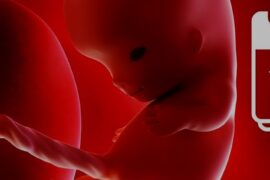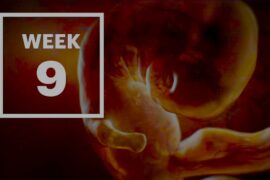The Wonders of the Placenta
The placenta, often regarded as the unsung hero of pregnancy, plays a pivotal role in nourishing and protecting the baby. Acting as a bridge between the mother and the baby, it facilitates the exchange of oxygen and nutrients, ensuring the fetus’s well-being. Let’s delve into the fascinating world of the placenta and uncover some astounding facts every expectant mother should know.
Introduction
The placenta is a unique organ, separating from the uterus after the baby is born. Its primary function is to supply oxygen and nutrients to the growing fetus while also removing waste products. Enriched with blood vessels, the placenta attaches itself to the wall of the uterus, providing a conduit for essential elements between mother and baby.

Importance of the Placenta:
Imagine a grand marketplace bustling with activity; that’s the placenta for you! The top side, fronting the baby, is made up of parts of the placenta embedded with numerous blood vessels, facilitating the transport of nutrients, hormones, and antibodies. Meanwhile, the waste products the fetus doesn’t need are transferred back to the mother for disposal. This entire process ensures that the baby grows and develops in a safe environment.
Pros of the Placenta:
- Waste Removal: The placenta effectively removes waste products produced by the fetus, ensuring a clean environment for the baby’s growth.
- Temperature Regulation: It helps regulate the temperature for the fetus, ensuring the baby remains at an optimal temperature for development.
- Immunity Boost: The placenta transfers antibodies from the mother to the fetus, providing the baby with passive immunity against many potential infections for the first few months after birth.
- Blood Regulation: The placenta helps in the production of red blood cells for the fetus, reducing the risk of anemia.
- Glucose Management: The placenta plays a role in managing glucose levels, ensuring that the fetus receives adequate energy for development.
- Barrier Function: While it allows essential nutrients and gases to pass through, the placenta also serves as a barrier against many bacteria (though not all viruses), safeguarding the fetus from potential infections.
- Endocrine Function: Apart from producing hormones essential for fetal growth, the placenta also produces enzymes and plays a vital role in steroid synthesis, crucial for both mother and baby.
- Adaptability: The placenta can adapt to various situations. For instance, if a part of the placenta is not working correctly or has been damaged, other parts can often take over its function.
- Calcium Transfer: The placenta ensures the fetus gets enough calcium for bone development, even if the mother’s intake is not optimal.
- Fetal Development Monitoring: The placenta produces alpha-fetoprotein, which can be monitored in maternal blood tests to check the baby’s development.
Cons of the Placenta:
- Infections: The placenta can sometimes become infected, a condition known as chorioamnionitis. This can pose risks to both the mother and the baby.
- Aging Placenta: Over time, the placenta can age and calcify, which can reduce its efficiency in nutrient and oxygen transfer in the late stages of pregnancy.
- Placenta Accreta: In some cases, the placenta may attach too deeply into the uterine wall, which can cause severe bleeding during its removal post-delivery.
- Twin-to-Twin Transfusion Syndrome: In twin pregnancies where the twins share a placenta, there’s a risk of one baby receiving too much blood and the other too little, leading to potential complications for both.
- Insufficient Growth: Sometimes, the placenta doesn’t grow adequately to support the baby, leading to intrauterine growth restriction (IUGR).
- Blocked Blood Flow: Blood clots or other obstructions in the placental blood vessels can compromise the baby’s oxygen and nutrient supply.
- Vasa Previa: A rare condition where fetal blood vessels cross the entrance to the birth canal beneath the baby, which can rupture and bleed during labor.
- Increased Risk for Medical Interventions: Complications related to the placenta might require increased medical monitoring, medications, or interventions like early delivery.
- Emotional Stress: Diagnosis of placental issues can lead to increased anxiety and stress for expectant parents, impacting the overall experience of pregnancy.
What you should know about the placenta when you are pregnant
- Unique Organ: The placenta is the only organ in the human body that is created and then disposed of. It forms after conception and is expelled after childbirth.
- Lifeline to the Fetus: The placenta provides the fetus with oxygen and nutrients from the mother’s blood. It also removes waste products from the fetus’s blood.
- Barrier Function: The placenta acts as a barrier to prevent most bacteria and large molecules, like certain drugs, from reaching the fetus. However, some viruses, drugs, and other substances can still cross this barrier.
- Hormone Production: The placenta produces various hormones essential for pregnancy, including human chorionic gonadotropin (hCG), progesterone, and estrogen. hCG is the hormone detected by pregnancy tests.
- Blood Separation: The mother’s and fetus’s blood never directly mix. They remain separated by a thin barrier in the placenta, allowing the exchange of nutrients and gases without direct contact.
- Size and Weight: By the end of pregnancy, the placenta usually measures about 20-25 centimeters in diameter and weighs approximately 500 grams to 1 kilogram.
- Location Variability: The placenta can attach to different parts of the uterus: top, side, front, or back. If it attaches too low, near or over the cervix, it’s called placenta previa and can lead to complications.
- Cord Insertion: The umbilical cord, which connects the fetus to the placenta, can attach at various positions on the placenta, not just the center.
- Cultural Significance: In many cultures, the placenta is considered sacred. Some families choose to plant it, eat it, or even have a ceremonial disposal.
- Placentophagy: Some women choose to consume their placenta after giving birth, believing it can offer health benefits, although scientific evidence on the benefits of placentophagy is limited.
- Multiple Placentas: In some multiple pregnancies, like twins, there can be two separate placentas, or the twins can share a single placenta.
- Aging Process: The placenta ages throughout pregnancy. By the end of the third trimester, it can show signs of aging, which is one reason why post-term pregnancies (those that go beyond 42 weeks) are monitored closely.
- Unique Fingerprints: Just as every person has unique fingerprints, every placenta has a unique “tree of life” pattern, referring to the appearance of its blood vessels.
- Medical Uses: The placenta can be a source of stem cells. Research into the use of placental stem cells for treating various diseases is ongoing.
- Health Indicator: The health and appearance of the placenta can provide insights into the overall health of the pregnancy. For instance, issues like gestational diabetes or high blood pressure can affect the placenta’s appearance and function.
Did You Know?
- Weeks of Wonder: The placenta begins its formation soon after fertilization and continues to grow and evolve throughout the weeks of pregnancy.
- Positional Varieties: Depending on how the placenta attaches and where it develops, you might hear terms like “top side” or “front placenta.”
- Twin Tales: In twin pregnancies, the way the placenta develops can differ, sometimes resulting in shared or separate placentas.
Is the Placenta Edible?
In some cultures, the placenta is indeed edible. If one opts to consume it, it’s essential to ensure proper preparation. Traditionally, it’s cooked, dehydrated, or even encapsulated.
Thorough Cleaning:
- Start by thoroughly rinsing the placenta under cool running water to remove any clots or residues.
- Place it on a clean chopping board.
Removal of the Umbilical Cord and Membranes:
- Detach the umbilical cord.
- Trim away the amniotic sac and any other membranes.
Steaming (for encapsulation or cooking):
- Place the placenta in a steaming pot or double boiler.
- Add water to the pot, ensuring it doesn’t touch the placenta.
- You can add spices or herbs like ginger, lemon, or green chilies for flavor if desired.
- Cover and steam until it’s fully cooked (similar to how you would cook meat).
Dehydrating (for encapsulation):
- Slice the steamed placenta into thin strips.
- Place these strips on a dehydrator tray.
- Dehydrate at 160°F (70°C) for at least 8 hours or until completely dry.
Grinding (for encapsulation):
- Once dehydrated, grind the placenta using a blender or food processor until it reaches a fine powder consistency.
- Store this powder in a cool, dry place or move on to encapsulation.
Encapsulation:
- Using a capsule machine or manual encapsulation method, fill capsules with the placental powder.
- Store the capsules in a cool, dark place.
Traditional Cooking:
- If not opting for encapsulation, you can treat the steamed placenta as you would other meats. It can be fried, stewed, or roasted, and used in various recipes.
Safe Storage:
- If not consuming immediately, refrigerate or freeze the placenta or placenta capsules to ensure they remain fresh. Use within a reasonable timeframe, treating it like perishable meat or medication.
Precautions:
- Always ensure that the placenta is from a healthy, complication-free pregnancy.
- Ensure thorough cooking to kill any potential pathogens.
- It’s crucial to consult with a healthcare professional before deciding to consume your placenta. Some conditions or medications may make it unsafe to do so.
- Be aware of the potential risks; while some individuals report benefits, others have noted negative side effects or no effects at all.
- Ensure cleanliness throughout the preparation process to avoid contamination.
Remember, the choice to consume the placenta is deeply personal. While some swear by its benefits, others choose not to partake due to potential risks or personal beliefs. Always make informed decisions based on individual needs and circumstances.
Benefits of Consuming the Placenta:
- Nutrient Rich: Rich in iron and vitamins, the placenta is believed to replenish nutrient levels post-delivery.
- Hormonal Balance: Some claim it can stabilize postpartum hormones, potentially preventing mood swings.
- Lactation Boost: Some mothers believe it can enhance breast milk production.
Potential Adverse Effects on the Child:
Research on the impact of mothers consuming the placenta on their newborns is limited. Some experts caution about potential toxins or harmful pathogens being reintroduced. Always consult with healthcare professionals before making a decision.
The Dynamic Journey of the Placenta:
From its inception, the placenta evolves in response to both maternal and fetal needs. As the weeks of pregnancy progress, the placenta grows, continuously adapting to accommodate the growing baby. By the end of the gestational period, the placenta’s size is astounding, showcasing the wonders of human biology.
Unique Phases of the Placenta:
- Development Phase: As the placenta develops, it embeds itself into the wall of the uterus, establishing its firm presence.
- Functioning Phase: Throughout the pregnancy, the placenta works relentlessly, ensuring the fetus receives everything it needs for optimal growth. The umbilical cord, a vital part of this system, connects the baby to the placenta, facilitating this exchange.
- Expulsion Phase: After the baby is born, the placenta follows through the birth canal, marking the end of its vital role. This is often referred to as the delivery of the “afterbirth.”
Conclusion
The placenta is an organ of wonder, safeguarding the fetus as it grows and develops. While its consumption post-birth remains a topic of debate, its unparalleled contribution during pregnancy is undeniable. As with all things pregnancy-related, when in doubt, always turn to trusted medical professionals for guidance.






